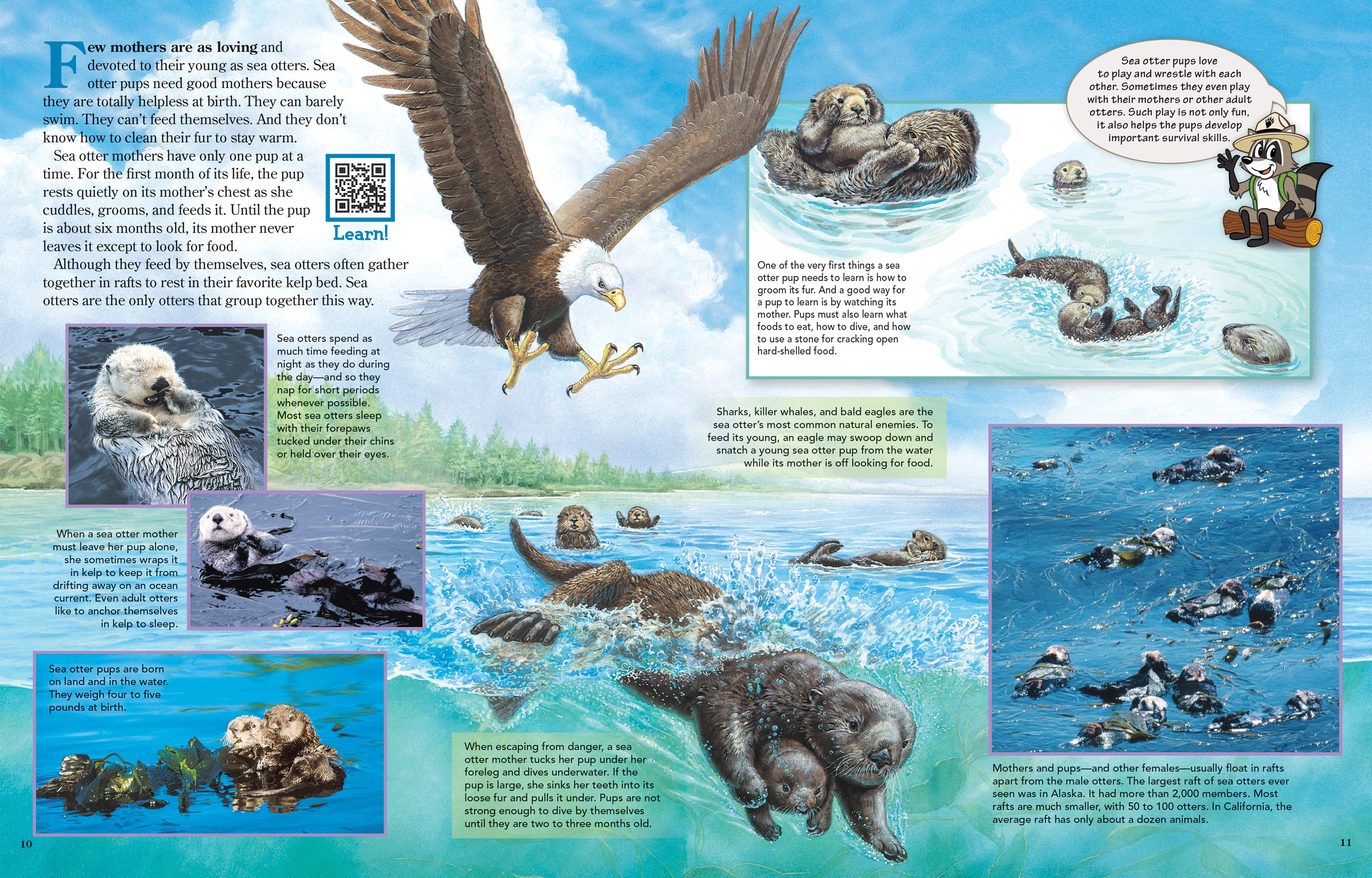
Sea Otter Mothers Love Their Pups
ByFew mothers are as loving and devoted to their young as sea otters. Sea otter pups need good mothers because they are totally helpless at birth. They can barely swim. They can’t feed themselves. And they don’t know how to clean their fur to stay warm.
 Sea otter mothers have only one pup at a time. For the first month of its life, the pup rests quietly on its mother’s chest as she cuddles, grooms, and feeds it. Until the pup is about six months old, its mother never leaves it except to look for food.
Sea otter mothers have only one pup at a time. For the first month of its life, the pup rests quietly on its mother’s chest as she cuddles, grooms, and feeds it. Until the pup is about six months old, its mother never leaves it except to look for food.
Although they feed by themselves, sea otters often gather together in rafts to rest in their favorite kelp bed. Sea otters are the only otters that group together this way.
Sharks, killer whales, and bald eagles are the sea otter’s most common natural enemies. To feed its young, an eagle may swoop down and snatch a young sea otter pup from the water while its mother is off looking for food.
Sea otters spend as much time feeding at night as they do during the day—and so they nap for short periods whenever possible. Most sea otters sleep with their forepaws tucked under their chins or held over their eyes.
Sea otter pups are born on land and in the water. They weigh four to five pounds at birth.
When a sea otter mother must leave her pup alone, she sometimes wraps it in kelp to keep it from drifting away on an ocean current. Even adult otters like to anchor themselves in kelp to sleep.
One of the very first things a sea otter pup needs to learn is how to groom its fur. And a good way for a pup to learn is by watching its mother. Pups must also learn what foods to eat, how to dive, and how to use a stone for cracking open hard-shelled food.
Sea otter pups love to play and wrestle with each other. Sometimes they even play with their mothers or other adult otters. Such play is not only fun, it also helps the pups develop important survival skills.
When escaping from danger, a sea otter mother tucks her pup under her foreleg and dives underwater. If the pup is large, she sinks her teeth into its loose fur and pulls it under. Pups are not strong enough to dive by themselves until they are two to three months old.
Mothers and pups—and other females—usually float in rafts apart from the male otters. The largest raft of sea otters ever seen was in Alaska. It had more than 2,000 members. Most rafts are much smaller, with 50 to 100 otters. In California, the average raft has only about a dozen animals.

